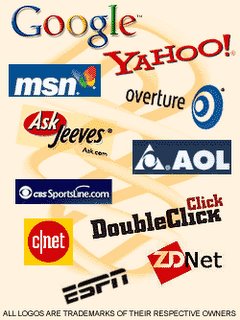
At the end of every month when I present the docket to my client what I do, is measure her/his RoI.
For the uninitiated, when one pays money to a publication or any other medium, she/he gets an amount of space/time. The value that he pays is determined by the penetration of that particular medium. So, The Hindu will have a particular advertising rate based on the standing that it enjoys in its markets. Similarly, Sun TV will charge a fee per 10 second or 30 second or so on, based on its reach and popularity.
Due to the maturity of these mediums, the way the value created for the advertiser is calculated is standardized and there are not many options. The popular ones are - display ads and classifieds. Quite simple!
Yes, it is. Makes life simple for PR professionals too. With no metrics of its own, PR borrowed the metrics of the advertising industry. And quite rightly, the output for both mediums is targeted at the same channel.
After much deliberations (hope so!) in the West, the legends of PR zeroed in on a simple formula to calculate PR RoI. It added a factor to the advertising value. It proclaimed - PR (read the written word or the word endorsed by journalists/third party) is three times more credible than the advertising space. One up on the entire advertising industry! :0. It called the PR RoI - the Visibility Index (VI).
So, if you were an advertiser and you spent Rs. 100 on a 10 cc space in a particular publication, the same space would be worth Rs. 300 if it was news (written by journalists).
Then over a period of time, PR also matured and it added more value to its formula. So, if you got a picture of a spokesperson the multiple factor increased by some points and if you get the name of the client on the headline the factor increases further, and so on.
All was fine. Until...
In came the disruptive Internet.
Oh yes, the Internet gave PR (and advertising) a great new medium. And gave them a challenge as well.
Let me explain how it is a challenge.
Let us consider the different opportunities that the Internet provides.
The most basic form of advertising is the banner ads. It comes in different shapes and sizes. Technology has given life to these banners and they are able to carry dynamic images.
Interstitials, I think, came a little later than the banners. These are basically the pop-ups and pop unders that irritates us. In many porn sites (yes, I have visited them in the past. Are you asking me if I do it even now? :)), if you close one pop-up you will be end up having numerous other irritations cropping up. Then the advertisers got little intelligent and created pop unders. All the same, they are pain on the...(no I did not mean that, I meant fingers). Acknowledging the pain, Internet browsers have enabled options to block pop-ups. I think that’s a great service to netizens
What I am more amazed about is that technology also understands which an irritant pop-up is and which one is genuine. Ever tried net-banking?
Okie coming back to other forms,
o Advergames is building in games in the advertisements
o Rich media is highly interactive and visually influential but it requires broadband to unleash its full potential
o Sponsorship, when you sponsor an event and the organizer puts your logo on the event site
o 3-D visualization
o Keyword search, a focused form advertising made popular by Google and Yahoo
Do you see the challenge?
Yes, you got it right. The challenge posed by Internet is that there are so many models of advertising that creating one standard formula becomes extremely difficult.
What's more, being an intelligent medium, Internet also offers you selective/focused reach. Let's say you want an ad only to reach out to Mac owners, no other medium can deliver that for you but the Internet. Yes! You want to reach out to people who use only Citibank, now it’s easy.
Also, you can define (at least to a great extent) the life of a medium. A daily is for a day, a magazine is for a week or month, TV is for that particular period. What about Internet?
Coming back again to the RoI, being a PR man, how do I measure it for my client? Which format should I use?
I am quite puzzled and struck when clients raise this issue.
So in an effort to solve this issue, I worked out a way with Amrita, my colleague.
What we did was to find out the ad rates of banners and take that as the unit value of advertising space. Then, we would calculate how many such units are there in a particular story. Multiply those many units by the advertising rate of the banner and 3.
Ah! How successfully we solved such a complicated problem!
Or at least that’s what we thought.
Recently on my trip to our Bangalore office, I made this presentation to the team. The grand-old Viju in his usual style first appreciated the thought and then brought to my notice that the banner ad themselves could differ from page to page. The rate of a banner in the home page maybe different from the one which results on a page which has been reached after say 4 clicks.
Blimey, no not again.
God, is there a solution!
Well, I have realized that calculating the RoI on Internet is not so much of an issue, the bigger challenge is implementation.
At the end of the month the tracking team should be able to spend the least amount of time calculating the VI.
Or else, clients will end up waiting for dockets!
(picture courtersy: www.netcentric-tech.com/ online_advertising.shtml)
No comments:
Post a Comment